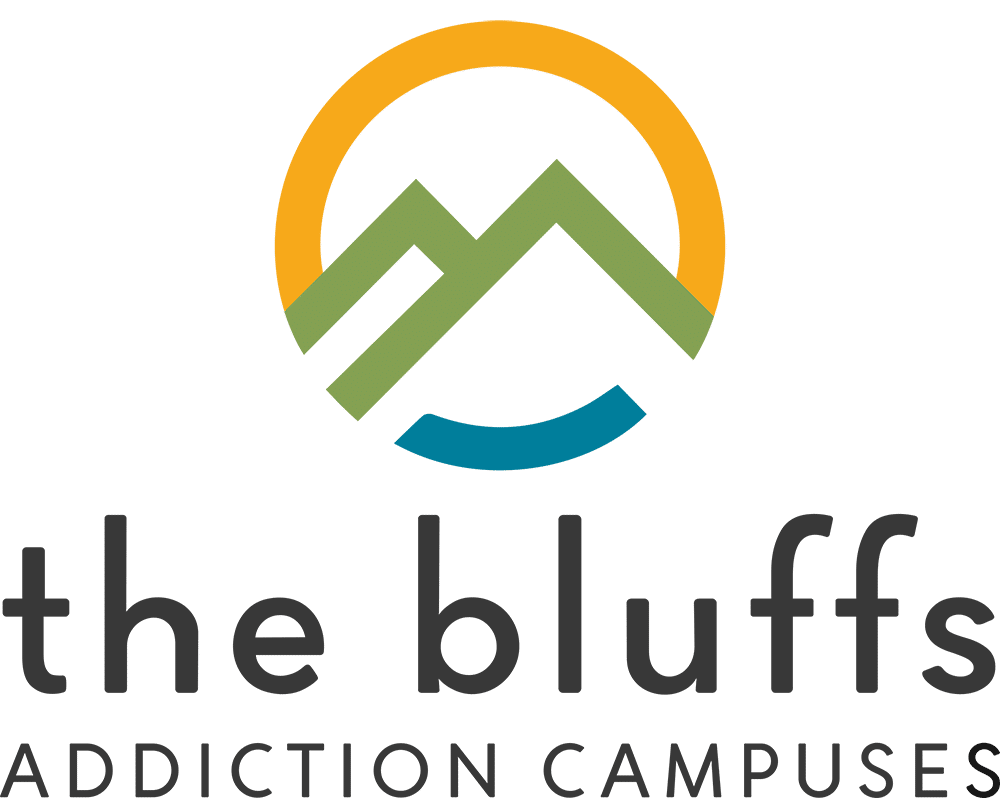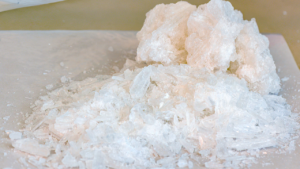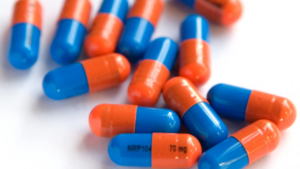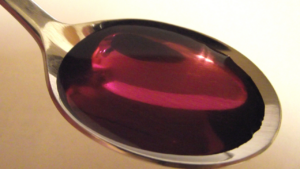Identifying the Side Effects of Cocaine
Cocaine is a well-known drug. It’s commonly mentioned in pop culture, from movies to music. You’re probably familiar with it, too. The drug is typically identified as a white powder. According to the National Institutes of Health (NIH), “Cocaine is a powerfully addictive stimulant drug made from the leaves of the coca plant native to South America. Although healthcare providers can use it for valid medical purposes, such as local anesthesia for some surgeries, recreational cocaine use is illegal.” Just because cocaine isn’t as popular a drug as it used to be doesn’t mean it’s not still being used today. In some cases, it’s actually even more dangerous than in previous years. Cocaine is often mixed with talcum powder, cornstarch, flour, synthetic opioids like fentanyl, and amphetamines. Many people who use cocaine aren’t even aware there are other substances mixed in the powder. More and more often, we’re seeing that cocaine is cut with dangerous drugs like fentanyl, which only requires a person to ingest 2 milligrams to result in a deadly overdose. In 2019, 77% of all cocaine-related overdose deaths in the state of Ohio involved fentanyl. Cocaine can be snorted, smoked, rubbed into the gums, or injected into the veins. On the streets, cocaine is identify as:
- Coca
- Crack
- Coke
- Crank
- Flake
- Rock
- Snow
- Soda Cot
While addiction is possible when it comes to using cocaine, there are other side effects you should be aware of. If you’re battling a cocaine addiction, getting professional help can assist you in addressing the side effects that come along with it. Remember, it’s OK to reach out for help. Think of it like this: When someone is struggling with a certain subject in school, they find a tutor. Similarly, you can be taught how to manage cocaine addiction. But for now, let’s take a look at the side effects commonly associated with cocaine use.
The Side Effects of Cocaine
People use cocaine for a variety of reasons. Typically, it’s used to experience feelings of pleasure by increasing levels of dopamine in the brain. Dopamine is a chemical that contributes to feelings of pleasure. As the NIH explains, ”Normally, dopamine recycles back into the cell that released it, shutting off the signal between nerve cells. However, cocaine prevents dopamine from being recycled, causing large amounts to build up in the space between two nerve cells, stopping their normal communication. This flood of dopamine in the brain’s reward circuit strongly reinforces drug-taking behaviors.” Short-term side effects of cocaine can include:
- Extreme happiness
- High energy levels
- Mental alertness
Cocaine highs usually last anywhere from 15 to 30 minutes. The high from crack cocaine usually lasts anywhere from five to 10 minutes. Long-term effects may include:
- Nosebleeds (from snorting)
- Asthma and other respiratory (breathing) problems (from smoking)
- Coughing (from smoking)
- Loss of smell (from snorting)
- Higher risk of infections (from smoking)
Serious side effects of cocaine use include heart attack and stroke.
Spotting a Cocaine Overdose
If you or someone you know may have overdosed on cocaine, call 911 right away. Cocaine overdoses are possible despite what some people might tell you. The NIH explains that those who use cocaine usually drink alcohol at the same time, or mix it with other drugs such as heroin, which just adds to its dangerous effects. When it comes to a cocaine overdose, symptoms can range from mild to severe, including:
- High body temperature
- Nausea
- Vomiting
- Chest pain
- Tremors
- Panic
- Paranoia (fear someone or something might hurt you)
- Anxiety
- Hallucinations (seeing or hearing things that aren’t there)
- Breathing problems
- Agitation
- High blood pressure
- Irregular heart rhythm
- Seizures
- Heart attack
- Stroke
Symptoms of a crack cocaine overdose may include:
- Black phlegm
- Itchiness
- Cold sweats
- Heart attack
- Stroke
- Seizures
- Irregular heartbeat
A cocaine overdose is considered a medical emergency, so if you or someone you know may have overdosed on cocaine, call 911 right away. As of now, there is no medication that can reverse the effects of a cocaine overdose. Medical professionals can, however, offer care to the person depending on their symptoms. Certain symptoms, such as heart attack, stroke, and seizure, may be treated. In cocaine overdose treatment, emergency personnel will attempt to restore blood flow to the heart in the event of a heart attack. They may restore oxygen to the brain if a stroke occurs, and they may try to stop a seizure if the person is presenting symptoms of one. Fentanyl, as mentioned earlier, is extremely dangerous as it is more potent than other opioids such as morphine. According to the NIH, “Some drug dealers are mixing fentanyl with other drugs, such as heroin, cocaine, methamphetamine, and MDMA. This is because it takes very little to produce a high with fentanyl, making it a cheaper option. This is especially risky when people taking drugs don’t realize they might contain fentanyl as a cheap but dangerous additive. They might be taking stronger opioids than their bodies are used to and can be more likely to overdose.”
What Is Crack Cocaine?
Crack cocaine dates back to the 1980s. It is smoked, usually through a pipe. According to the Department of Justice, “Crack cocaine is a highly addictive and powerful stimulant that is derived from powdered cocaine using a simple conversion process. Crack emerged as a drug of use in the mid-1980s. It is used because it produces an immediate high and because it is easy and inexpensive to produce—rendering it readily available and affordable.” Crack typically comes in the form of “rocks.” Crack rocks vary in color, ranging from white to yellow to pink. They can also be found in various sizes. On the streets, crack is known as:
- Ice cube
- 24-7
- Bedrock
- Cookies
- Chemical
- Cloud
- Dice
- French fries
- Gravel
- Hot cakes
- Hard rock
- Prime time
- Hard ball
- Snow Coke
The DOJ says, “Cocaine, in any form, is a powerfully addictive drug, and addiction seems to develop more quickly when the drug is smoked—as crack is—than snorted—as powdered cocaine typically is.” “In addition to the usual risks associated with cocaine use (constricted blood vessels; increased temperature, heart rate, and blood pressure; and risk of cardiac arrest and seizure), crack users may experience acute respiratory problems, including coughing, shortness of breath, and lung trauma and bleeding. Crack cocaine smoking also can cause aggressive and paranoid behavior.”
Spotting Cocaine Addiction
Those who are addicted to cocaine eventually discover how difficult it is to manage the condition. They’ll find that the cravings can be strong and intense. Signs of cocaine addiction can include:
- Changes in mood or behavior
- Poor job performance
- Inability to stop using the drug
- Strained relationships
- Financial problems
- Excessive time spent using the drug
- Overdose
- Constantly thinking about cocaine
- Using more cocaine than you intended
- Withdrawal symptoms
Cocaine withdrawal can present itself in a few ways. This happens when you abruptly stop using the drug. Withdrawal symptoms can include:
- Fatigue
- Depression
- Increased appetite
- Decreased energy levels
The earlier you can spot these signs of addiction, the better.
What Are Co-Occurring Disorders?
Many people who seek professional addiction treatment will discover they have co-occurring disorders, which is when a mental health disorder and a substance use disorder (SUD) coexist. According to the NIH, “Researchers have found that about half of individuals who experience a SUD during their lives will also experience a co-occurring mental disorder and vice versa. Co-occurring disorders can include anxiety disorders, depression, attention-deficit hyperactivity disorder (ADHD), bipolar disorder, personality disorders, and schizophrenia, among others.” Experts agree that in some cases, mental health disorders can contribute to substance use disorders. For example, someone may turn to substances to cope with the struggles they’re experiencing as a result of having a mental health disorder, but many don’t understand that that can actually make things worse. When it comes to substance use disorders, they can change brain structure and function, possibly leading to mental health disorders. Finally, the NIH explains, “Both SUDs and other mental disorders can run in families, suggesting that certain genes may be a risk factor. Environmental factors, such as stress or trauma, can cause genetic changes that are passed down through generations and may contribute to the development of a mental disorder or a substance use disorder.”
Recovery Is Possible
We all struggle with something. And all of our struggles are unique. If you’re struggling with cocaine, you can break free. No matter what you’ve gone through, and no matter how many times you’ve tried to get sober and relapsed, recovery is still possible. You deserve to live a life free from the grasp of cocaine. Your situation is unique, but so many people have learned how to overcome their addiction. You can, too. Just because the path to recovery may not be easy doesn’t mean it’s not worth it. Your health and happiness are two of the most important things in your life. You can take both of those things back. Professional treatment can help you learn how to manage and eventually defeat your addiction. You are never alone. If you find yourself at your lowest or darkest point, reach for that hand to pull you into the light. Keep going. Keep pushing forward. Keep your hope alive. The first step is usually the hardest, but in the end, you’ll be glad you started the walk. “It was so risky and so scary, and yet at the same time, so beautiful. Maybe the truth was, it shouldn’t be easy to be amazing. Then everything would be. It’s the things you fight for and struggle with before earning that have the greatest worth. When something’s difficult to come by, you’ll do that much more to make sure it’s even harder — if not impossible — to lose.”— Sarah Dessen
Addiction Treatment at Vertava Health – Ohio
Here at The Bluffs, we understand your situation is unique, which is why we create treatment plans just for you. Our inpatient cocaine rehab program will address the symptoms of your addiction and daily-life contributors that may affect it. We use evidence-based treatments like cognitive behavioral therapy and dialectical behavior therapy to help change thoughts and behaviors that lead to unwanted or unhealthy habits. We also offer recreational activities as a healthy alternative to cocaine use. No one should ever have to face addiction alone. Whether it’s you or a loved one, we’re here to help every step of the way. Don’t let addiction control your life. Call us today at (888) 481-7821.
Frequently Asked Questions
What are the signs of a cocaine overdose? If someone is showing signs of a cocaine overdose, call 911 immediately. Symptoms of cocaine overdose can include:
- High body temperature
- Nausea
- Vomiting
- Chest pain
- Tremors
- Panic
- Paranoia (fear someone or something might hurt you)
- Anxiety
- Hallucinations (seeing or hearing things that aren’t there)
- Breathing problems
- Agitation
- High blood pressure
- Irregular heart rhythm
- Seizures
- Heart attack
- Stroke
The National Institutes of Health says those who consume cocaine typically drink alcohol at the same time or mix it with other drugs such as heroin, which just adds to its dangerous effects. What are some of the long-term effects of cocaine use? Long-term effects of cocaine use include:
- Nosebleeds (from snorting)
- Asthma and other respiratory (breathing) problems (from smoking)
- Coughing (from smoking)
- Loss of smell (from snorting)
- Higher risk of infections (from smoking)
More serious side effects of cocaine use include heart attack and stroke As you continue to use cocaine, you may need more of the drug to feel its effects. This can lead to not only the effects mentioned above but an addiction, too. What are co-occurring disorders? Having co-occurring disorders means having the combination of a mental health disorder and a substance use disorder (SUD). The NIH says, “Researchers have found that about half of individuals who experience a SUD during their lives will also experience a co-occurring mental disorder and vice versa. Co-occurring disorders can include anxiety disorders, depression, attention-deficit hyperactivity disorder (ADHD), bipolar disorder, personality disorders, and schizophrenia, among others.” What is crack cocaine? Crack cocaine is a form of cocaine that is smoked, usually through a pipe. Much like the basic form of cocaine, it’s highly addictive. Crack typically comes in the form of “rocks.” Crack rocks vary in color, ranging from white to yellow to pink. They can also be found in various sizes.







